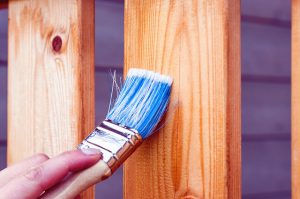Everyone desires to create a home out of a house, and an easy way to get this done is by just reply coloring the interior if the house with colors that suit one’s style and likeness. It is a shared belief that painting is easy and messy as well.
 Normally, painting a house results to a room with paint drops and patches almost everywhere. However, painting a room does not have to be a difficult task but rather something that yields excellent results. The steps below act as a guideline to painting the interior wall correctly.
Normally, painting a house results to a room with paint drops and patches almost everywhere. However, painting a room does not have to be a difficult task but rather something that yields excellent results. The steps below act as a guideline to painting the interior wall correctly.
Step 1. Clearing the room of any materials that you would not want the paint to contaminate. If making the room is not an option then the materials rounded up at the center of the chamber.
Step 2. The nail holes and bigger holes filled using either the painters putty or the spackle respectively. The holes create an ugly impression especially after the painting job and as such needs filled correctly before the painting process.
Step 3. The third step involves using a damp cloth to clear any dust and mold that could have found their way into the interior surfaces of the house, and is important as it helps create a surface to which the tape adheres.
Step 4. Mask off all trims using the blue painters tape. A regular marking tape is a bad option as it can lead to pulling up of the trim paint and hence calling for a repainting job. Taping very carefully and slowly is the secret here with the wall surface and the edge of the sticker having a small gap left to paint. The prep work for this section is very crucial as the results strictly depend on it.
Step 5. The ceiling edge along the wall is marked using the two-inch tape. On that note, provides an error rate for accidently rolling the roller on the roof. It also aids in alignment of the paint job saving the hustle and bustle of trying to use the roller to align.
Step 6. A paintable caulk and a caulk gun are necessary are used to create a thin bead if caulk along the taped wall edges. Make caulk as small as possible over the sides of the wall and the trim using the fingertip. It is a crucial stage and activity as it has an enormous impact on the overall outcome of the paint job. The primary purpose of the process is the prevention of the paint from seeping through past the tape and these results to clean edges with s nice finish on the paint job.
Step 7. Paint splatter is a major problem when it comes to painting, and a simple act of rolling a tape and masking paper together is an easy way to help reduce paint splatter. In as much as it is helpful, it is optional since the primary input is that eventually, it helps reduce the cleanup time after the job. Carefully handling the trim with the tape is likely to suffice along the ceiling.
Step 8. The caulk is to be gaunt and let dry for approximately 20 minutes. The thin nature of the caulk is likely to allow for a lesser time in the drying process. The prep and work plan of the house are set and laid while the caulk is drying.
Step 9. Brush up the edges of the wall to the taped edges by employing the use of the brush.
Step 10. The actual painting kicked off and done using the roller pan and the roller itself. Too quick in rolling the roller and it sends paint splashing everywhere in the room. Rolling up to the edge of the ceiling needs a careful doing.
Step 11. Paint the room as per the manufacturer’s manual to ensure proper results. Letting the paint dry is the first step followed by the second coat application. Commitment is key to getting to get the desired results.
Step 12. Let the paint dry throughout the whole night. The tape is let to stay overnight with paint until it dries. As so, this reduces the elasticity of the paint building up on the wall edges.
Step 13. Eliminate the tape from the wall at a 90° angle from the surface. Therefore, this allows for uniform rolling out of the sticker creating a smooth edge. The amount of caulk is very crucial in tape removal and hence should be thin to ease the process. You can alternatively use a razor to help in the caulk problem.